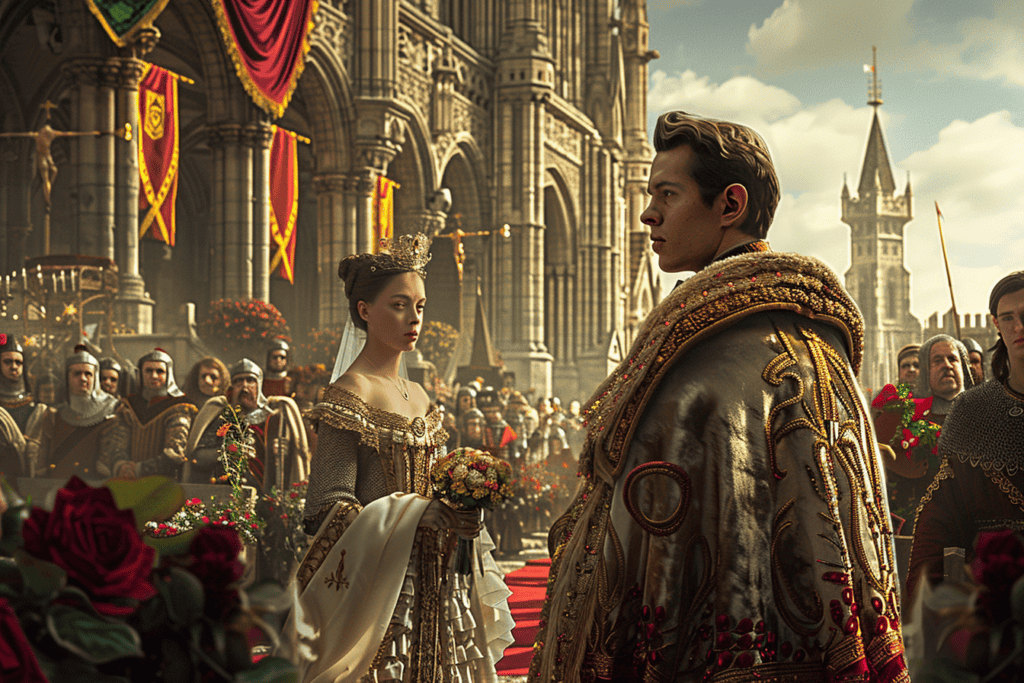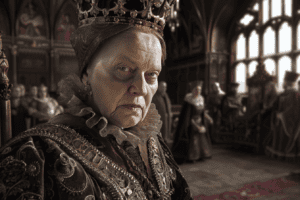Edward of Westminster, also known as Edward of Lancaster, was the only son of King Henry VI and Queen Margaret of Anjou.
Born in 1453, he was the rightful heir to the English throne, but his life was marked by tragedy and conflict.
He became a key figure in the Wars of the Roses, a series of battles fought between the House of Lancaster and the House of York for control of the English throne.

Edward was a fiery and passionate young man, who was deeply committed to the cause of his family and his people.
He was a skilled warrior, and he fought bravely on the battlefield, earning the respect of his enemies as well as his allies.
However, his life was cut tragically short when he was killed in battle at the age of just 17, marking the end of the Lancastrian line and the beginning of a new era in English history.
Despite his short life, Edward left a lasting legacy, and his story continues to fascinate historians and enthusiasts alike.
Early Life of Edward of Westminster

Edward of Westminster was born on October 13, 1453, at the Palace of Westminster in London.
He was the only son of King Henry VI of England and his wife, Margaret of Anjou.
As the grandson of King Charles VII of France, Edward was of royal lineage, and his birth was celebrated by the people of England.
Prince of Wales and Lancaster Heir
As the only son of King Henry VI, Edward was the Prince of Wales and heir to the House of Lancaster.
However, his father’s mental illness made it difficult for him to rule, and the Yorkist faction challenged Henry’s authority.
The Yorkists claimed that Henry was incompetent to govern and that they had a superior claim to the throne.
Despite the political turmoil, Edward was raised to be a strong and capable leader.
He was educated in the arts and sciences, and he was trained in the art of war.
His mother, Margaret of Anjou, was a powerful and influential figure, and she played an active role in her son’s upbringing.
Edwards Role in the Wars of the Roses

Edward of Westminster, also known as Edward, Prince of Wales, was born into a time of great political turmoil in England.
The Wars of the Roses had erupted between the House of Lancaster and the House of York, both branches of the Plantagenet royal house.
Edward was the only child of Henry VI and Margaret of Anjou, and was disinherited by the Act of Accord in 1460. The Yorkists, led by Edward IV, had taken the throne and Edward of Westminster grew up in exile with his mother.
The tensions between the two houses continued to rise, and in 1470, Henry VI was briefly reinstated as king. However, this was short-lived, as Edward IV returned to the throne the following year.
Edward of Westminster was married to Anne Neville, daughter of the Earl of Warwick, during Henry VI’s brief readeption.
Edward’s Military Involvement
Edward of Westminster was a key figure in the Lancastrian cause during the Wars of the Roses.
He was present at the Battle of Wakefield in 1460, where his father-in-law, the Earl of Warwick, was defeated and killed.
Edward was only seven years old at the time, but his involvement in the conflict would only grow as he got older.
In 1470, Edward accompanied his mother and Henry VI on their return to England, and played a key role in the Battle of Barnet, which was fought between the Lancastrians and the Yorkists.
The Lancastrians were defeated, and Edward was forced to flee to Scotland.
The Battle of Tewkesbury and Edward’s Demise
Edward of Westminster’s final battle was the Battle of Tewkesbury, which was fought on May 4, 1471.
Edward was only 18 years old at the time, but he was already a seasoned warrior.
He led the Lancastrian army into battle, but the Yorkists, led by Edward IV, were too strong. The Lancastrians were defeated, and Edward was killed.
After the battle, Edward’s body was found on the battlefield, and it is said that he was beheaded by the Yorkists.
His death marked the end of the Lancastrian cause in the Wars of the Roses, and paved the way for Edward IV to consolidate his power.
Personal Life and Relationships

Edward of Westminster was married to Anne Neville, daughter of the Earl of Warwick, during Henry VI’s readeption.
The marriage was politically motivated, as it helped to strengthen the Lancastrian cause by forming an alliance between the two powerful families.
However, it is said that Edward and Anne grew to genuinely love each other, and their marriage was a happy one.
Edward of Westminster had several powerful patrons throughout his life.
His mother, Margaret of Anjou, was a strong supporter of his claim to the throne and worked tirelessly to promote his cause.
He was also supported by his father, Henry VI, who was a kind and gentle man, but suffered from bouts of mental illness.
Edward’s father-in-law, the Earl of Warwick, was another important patron.
Warwick was one of the most powerful men in England and had helped to put Edward’s father on the throne. However, he later switched his allegiance to the Yorkist cause and became known as the “Kingmaker” for his ability to influence the outcome of battles.
Edward also had alliances with foreign powers, including France, Scotland, and Burgundy.
These alliances were important in helping him to secure his claim to the throne, but they also made him a target for his enemies.
Edward’s Place in History

Edward of Westminster, the only son of King Henry VI and Queen Margaret of Anjou, had a significant impact on the Wars of the Roses, despite his young age and short life.
As the Lancastrian heir, he was the symbol of the Lancastrian cause, and his death at the young age of 17 marked the end of the Lancastrian line and the beginning of the Tudor dynasty.
Edward’s death at the Battle of Tewkesbury was a significant turning point in the Wars of the Roses, as it paved the way for the Yorkist victory and the eventual accession of King Edward IV.
His death also marked the end of the direct Lancastrian claim to the English throne, and the beginning of a new era in English history.
Representation in Literature and Art
Edward of Westminster’s tragic fate has been the subject of numerous works of literature and art, including Shakespeare’s play “Henry VI, Part 3.”
In the play, Edward is portrayed as a fiery and impetuous young prince. He is ultimately betrayed by his own allies and killed in battle.
Edward’s legacy has also been depicted in various works of art, including paintings, sculptures, and tapestries.
These works often depict him as a handsome and noble young prince, whose untimely death marked the end of an era in English history.
Edward of Westminster’s short life and tragic death had a significant impact on English history and culture. His legacy continues to be remembered and celebrated in various forms of art and literature. His place in history as the last Lancastrian heir and the symbol of the Lancastrian cause remains secure.










Add Comment